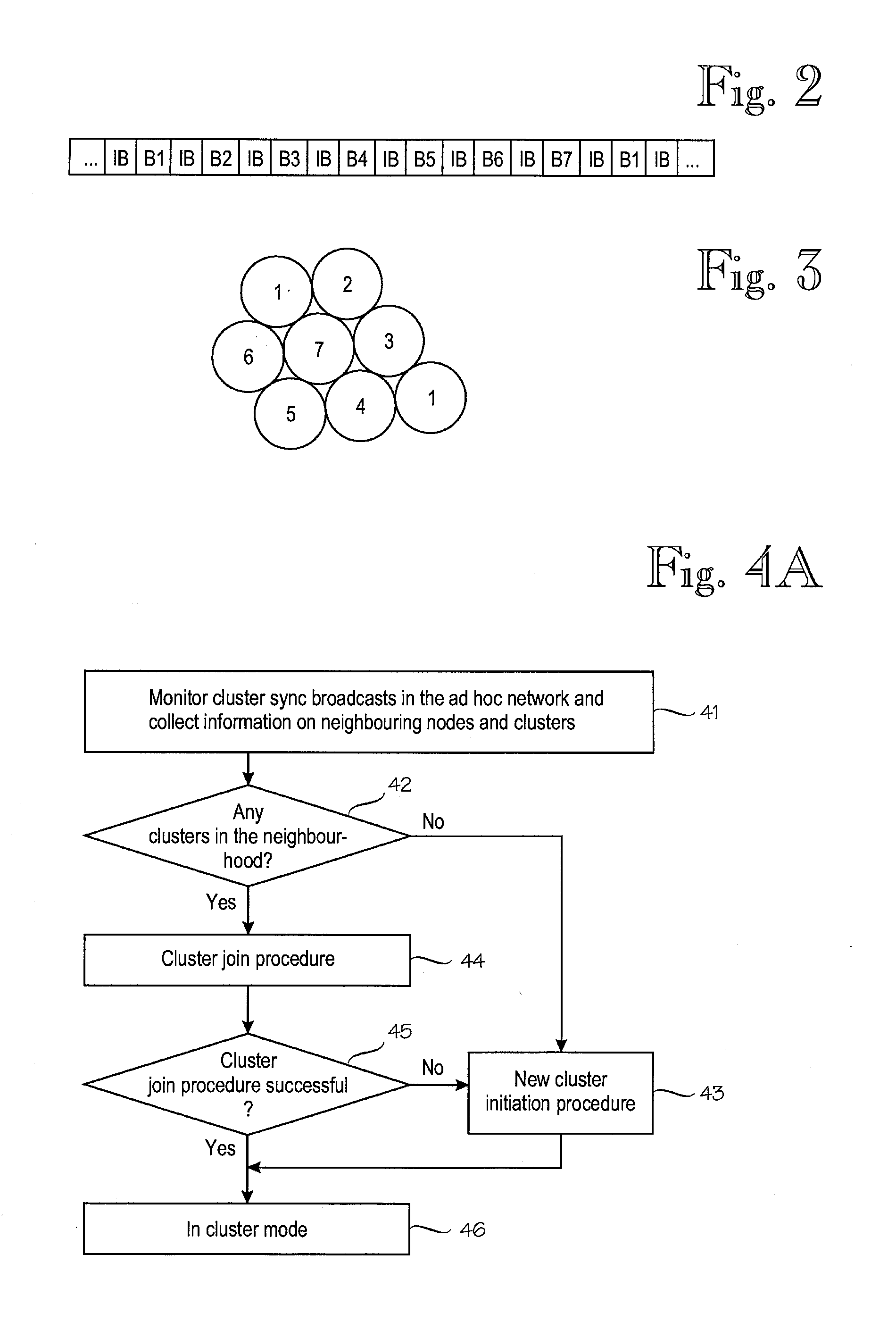Device and method for a multi-hop mobile ad hoc network
a mobile technology, applied in the field of multi-hop ad hoc networks, can solve the problems of rapid and unpredictability of network topology, unpredictability of wireless topology of mobile ad hoc network, and variation of terminals, so as to achieve flexible and less vulnerable operation of nodes, sufficient synchronization
- Summary
- Abstract
- Description
- Claims
- Application Information
AI Technical Summary
Benefits of technology
Problems solved by technology
Method used
Image
Examples
Embodiment Construction
[0065]As used herein, the term “mobile ad hoc network” is a collection of wireless nodes (mobile hosts) that can dynamically be set up anywhere and anytime without using any pre-existing network infrastructure. The structure of a mobile ad hoc network is not fixed but can change dynamically, i.e. nodes can be added to or removed from the ad hoc network while the ad hoc network is operational without causing irreversible failures. A node is an autonomous computing entity in a network. A simplified schematic diagram of an exemplary node N1 is illustrated in FIG. 1A. A node N1 may be provided with a communication interface 2 (such as wireless communication means, e.g. radio part with a transmitter, a receiver, and antenna 5) and a data processing unit 3 (which may include a processor and some memory as well as peripheral entities). A data and control interface 4 may be provided between the communication interface 2 and the data processing unit 3. The employed radio interface may be, fo...
PUM
 Login to View More
Login to View More Abstract
Description
Claims
Application Information
 Login to View More
Login to View More - R&D
- Intellectual Property
- Life Sciences
- Materials
- Tech Scout
- Unparalleled Data Quality
- Higher Quality Content
- 60% Fewer Hallucinations
Browse by: Latest US Patents, China's latest patents, Technical Efficacy Thesaurus, Application Domain, Technology Topic, Popular Technical Reports.
© 2025 PatSnap. All rights reserved.Legal|Privacy policy|Modern Slavery Act Transparency Statement|Sitemap|About US| Contact US: help@patsnap.com



